(Upload on February 16 2024) [ 日本語 | English ]
Mount Usu / Sarobetsu post-mined peatland
From left: Crater basin in 1986 and 2006. Cottongrass / Daylily
HOME > Lecture catalog / Research summary > Glossary > Bird
Bird (Aves)Class: Aves Linnaeus (1758), ca 10,000 spp.Feathered, winged, bipedal, warm-blooded and egg-laying vertebrates Bird greatly contributes seed dispersal of plants[Field training: integrated environmental research: fauna and flora (種リスト), avifauna (鳥類リスト), insect (昆虫), mammal (哺乳類)] 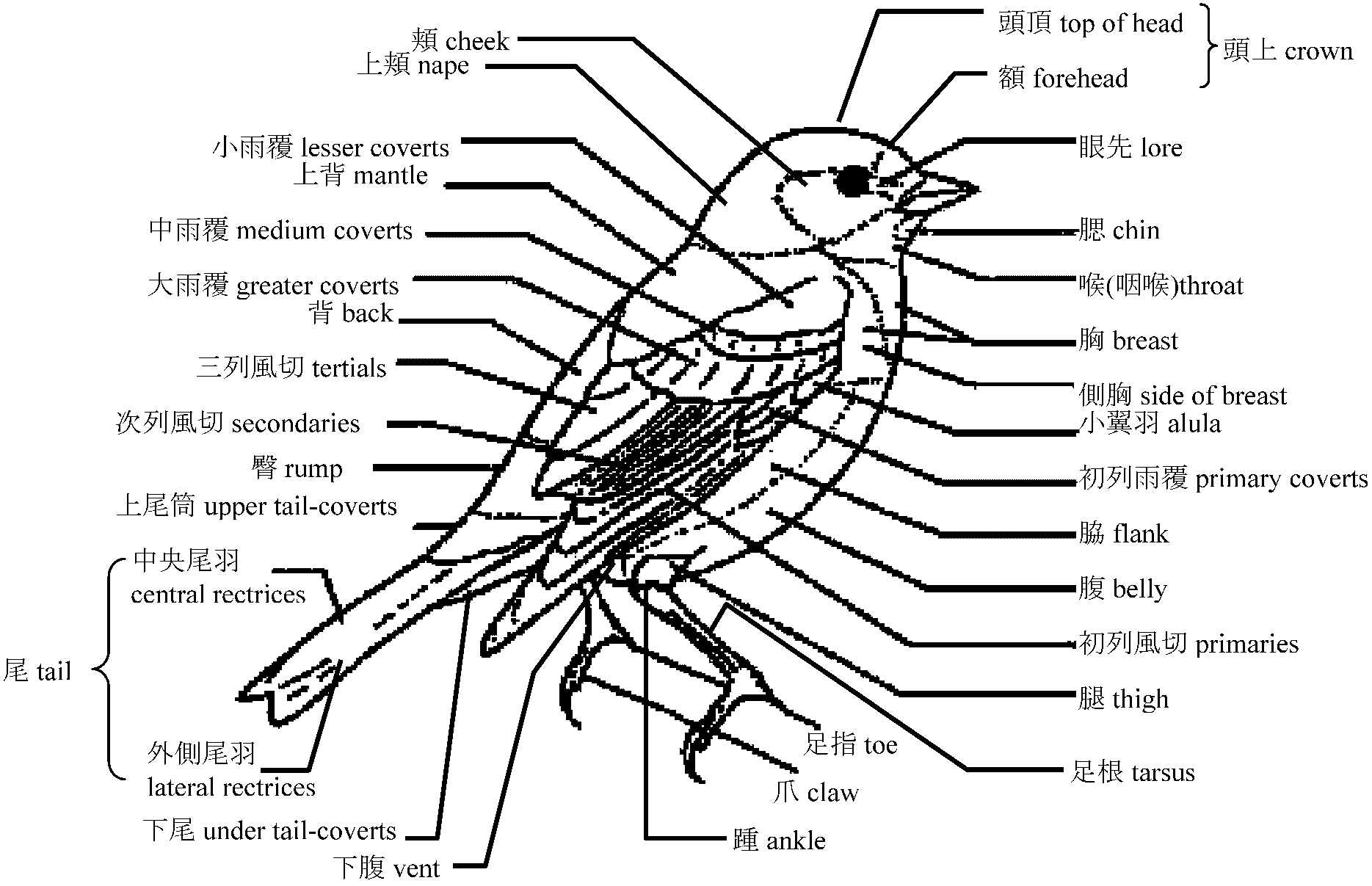
|
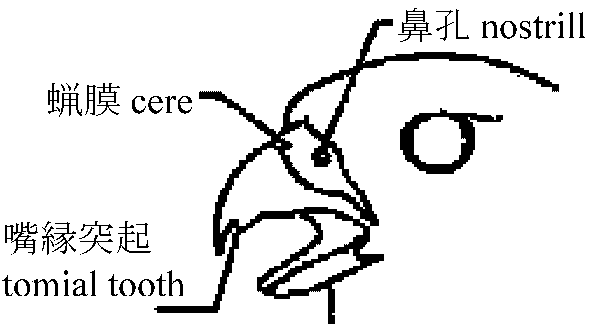
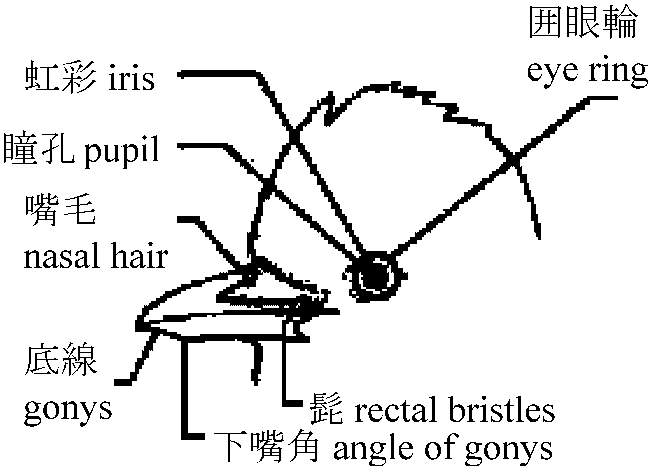
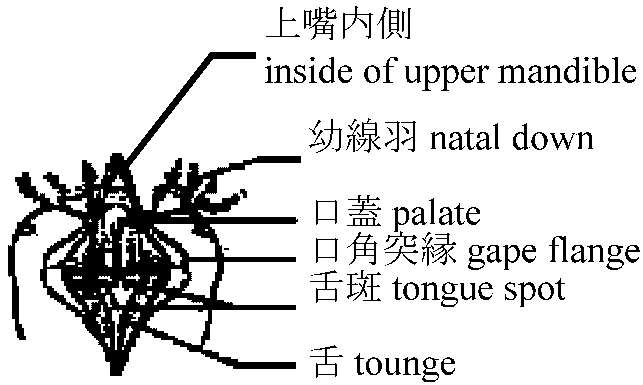
|
Subclass Archaeornithes 古鳥亜綱developing teethArchaeoteryx (= Archaeornis) 始祖鳥: after Cretaceous Subclass Neornithes 新鳥亜綱Order Odontognahta 歯顎目Cretaceous-EoceneOrder Ichthyornithes 魚鳥目Cretaceous0. Struthioniformes (Ratitae), 走鳥類not fly in the presentOrder Struthioninformes ダチョウStruthionidae, ostrichOrder Sphenisciformes (penguin, ペンギン)Rheidae, rhea: Paleocene–HoloceneCasuariidae, cassowary Dromaiidae, emu Aepyornithidae, elephant bird: extinct Dinornithidae, moa: extinct Apterygidae, kiwi 1. Geornithes 地鳥類live on groundOrder Galliformes キジafter Eocene. brids in Japan are resident, excpet quailPhasianidae キジ: most species feed grass seeds on the ground (rarely feed insects. the feet are covered with feather Subfam Rollulinae Subfam Phasianinae Phasianus soemmerringii ヤマドリ, P. colchicus キジ pheasant Bambusicola thoracica コジュケイ Coturnix coturnix ウズラ quail Tetraonidae (ライチョウ): the feet are not covered with feather, often including into Phasianidae Lagopus lagopus L. 1758 (カラフトライチョウ), willow ptarmigan 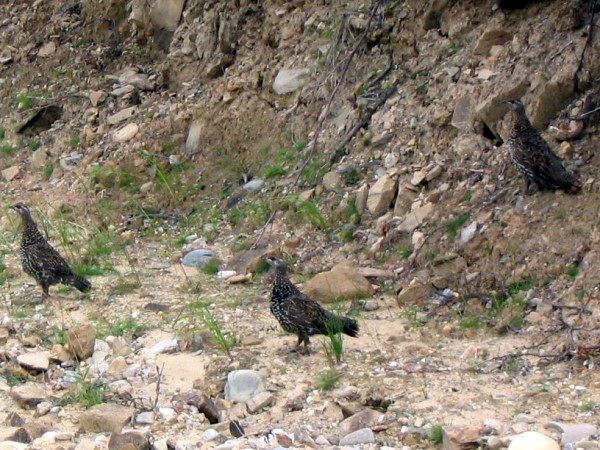 Lagopus muta Montin 1781, syn. L. mutus, (ライチョウ) grouse
Lagopus muta Montin 1781, syn. L. mutus, (ライチョウ) grouseatkhensis Turner 1882. dixoni Grinnell 1909. evermanni Elliot D. G. 1896. gerasimovi Red'kin 2005. helvetica Thienemann 1829. hyperborea Sundevall 1845. islandorum Faber 1822. japonica Clark A. H. 1907, Honshu (Japan). kurilensis Kuroda 1924. macruros Schiøler 1925. millaisi Hartert 1923. muta Montin 1781. nadezdae Serebrovski 1926. nelsoni Stejneger 1884. pleskei Serebrovski 1926. pyrenaica Hartert 1921. reinhardi Brehm C. L. 1824. ridgwayi Stejneger 1884. rupestris Gmelin J. F. 1789. saturata Salomonsen 1950. townsendi Elliot D. G. 1896. welchi Brewster 1885. yunaskensis Gabrielson et Lincoln Tetrastes bonasia (エゾライチョウ)Tetrao urogallus (ヨーロッパオオライチョウ) capercaillie Order Gruiformes (Alectorides) ツルOtididae ノガンGruidae ツル: Grus ツル crane Rallidae クイナ Order Limicolae-Lari シギ・カモメLarus カモメ gullOrder Charadriiformes チドリ (New taxonomy)formerly considered to be phylogenetically close to Gruiformes and ColumbaeSuborder Charadrii チドリ
Suborder Scolopaci シギRostratulidae (タマシギ): 3 spp. Jacanidae (レンカク): 8 spp. Pedionomidae (クビワミフウズラ): 1 spp. moved from GruiformesThinocoridae (ヒバリチドリ): 4 spp. Scolopacidae (シギ): 96 spp. |
Scolopax rusticola L. 1758 (ヤマシギ), Eurasian WoodcockSuborder Lari カモメOrder Alciae ウミスズメOrder Ansers ガンカモOrder Phoenicopteri ベニヅル(フラミンゴ)Order Gressores コウサギArdeidae Leach 1820 (サギ, heron, egret or bittern)Ardea L. 1758 (アオサギ, grey heron) A. alba L. 1758 (ダイサギ, great egret) A. cinerea L. 1758 (アオサギ, grey heron) A. intermedia Wagler 1829 (チュウサギ, intermediate egret) A. purpurea L. 1766 (ムラサキサギ, purple heron) 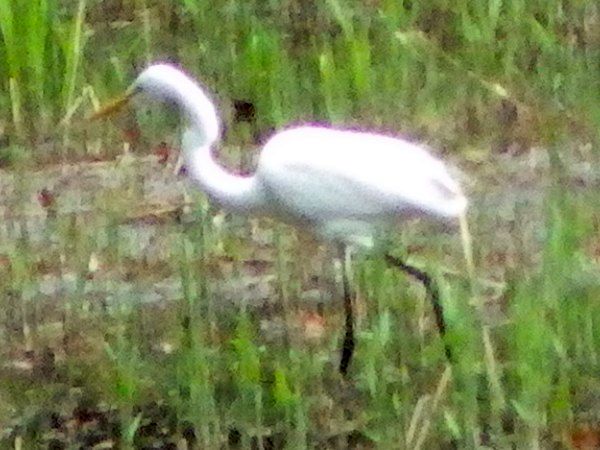
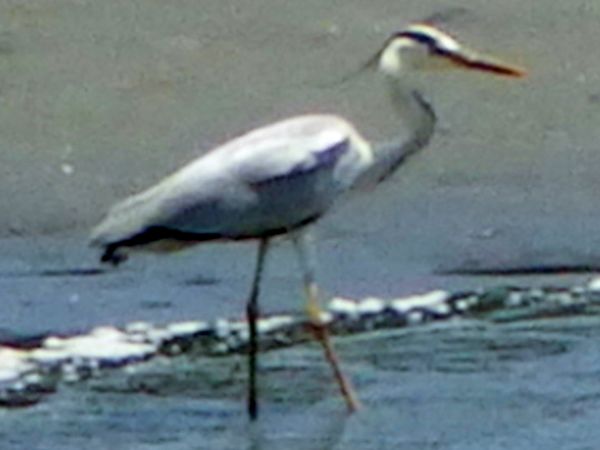
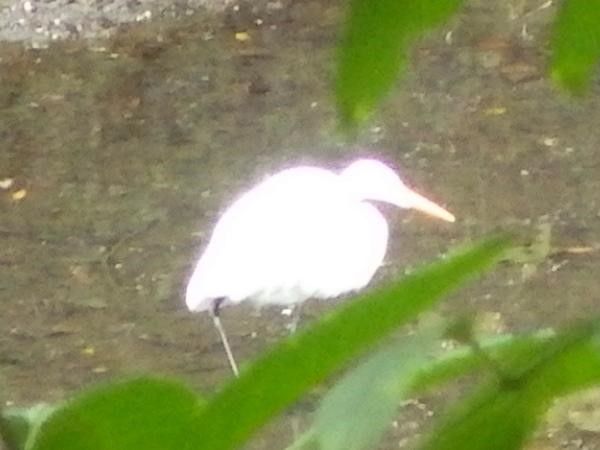 Order Accipitres (ワシタカ)after Eocene. coarnivore, ♀ > ♂Accipitridae (タカ), wing tips open like fingers 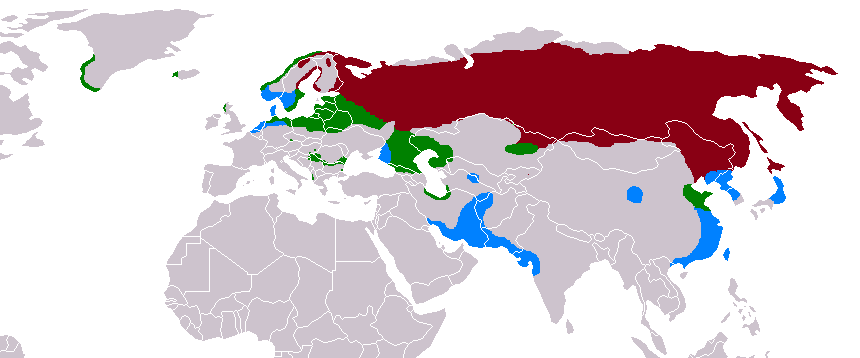 Range of Heliaeetus albicilla. ■ = nesting range, ■ = wintering range, ■ = year-round range Falconidae (ハヤブサ), sharp wings and a long tail: Falco peregrinus ハヤブサ Order Steganopodes ウPhalacrocorax ウ cormorantP. capillatus ウミウ(used for cormorant fishing) P. carbo カワウ P. melanoleucos Vieillot 1817 シロハラコビトウ, little pied cormorant, Kawaupaka Order Tubinares ミズナギドリOrder Pygopodes アビ2. Dendronithes 樹鳥類Order Cuculi ホトトギスfour species in Japan → all species are brood parasitism → not building the nestsCuculidae ホトトギス Cuculus poliocephalus ホトトギス, C. canorus カッコウ: north to Shikoku, C.saturatus ツツドリ: north to Shikoku, C. fugax ジュウイチ: north to Shikoku Order Columbae ハトColumbidae ハト: herbivorousSphenurus sieboldii アオバト, Columba janthina カラスバト, Streptopelia orientalis キジバト(ヤマバト), S. decaoto シラコバト(ドバト/デンショバト) = カワラバト C. livia breeing species Order Psittaci オウムOrder StrigesフクロウStrigidaeフクロウ, carnivorous, nocturnal habitStrix (フクロウ, 梟) S. uralensis フクロウ four subspecies in Japan: fuscescens Temminck et Schlegel 1850 (キュウシュウフクロウ), hondoensis Clark 1907 (フクロウ), momiyamae Taka-Tsukasa 1931 (モミヤマフクロウ), japonica Clark 1907 (エゾフクロウ) Order Caprimulgi ヨタカCaprimulgidae ヨタカ: nests built on the ground. Caprimulgus indicus ヨタカOrder Coracii ブッポウソウAlcedinidae カワセミHalcyon coromanda アカショウビン, Alcedo atthis カワセミ, Ceryle lugubris ヤマセミ Coraciidae ブッポウソウ, insectivorous: Eurystomus orientalis ブッポウソウ Order Macrochires アマツバメApodidae アマツバメ: Apus pacificus アマツバメ |
Order Pici キツツキPicidae キツツキ: in forestPicus canus ヤマゲラ, Dryocopus martius クマゲラ, Dendrocopos kizuki コゲラ Japanese pygmy woodpecker Ramphastidae オオハシOrder PasseresスズメHirundinidae ツバメHirundo rustica ツバメ, Delichon urbica イワツバメ Pittidae ヤイロチョウAlaudidae ヒバリ Alauda arvensis ヒバリ skylark Passeridae Illiger 1811 (スズメ), (true) sparrows Passer Brisson 1760 (スズメ), sparrows P. domesticus L. 1758 (イエスズメ), cosmopolitan in the Old World Motacillidae セキレイ Motacilla cinerea キセキレイ Anthus タヒバリ Campephagidae (Vigors 1825) サンショウクイ Pycnonotidae ヒヨドリ: Hypsipetes amaurotis ヒヨドリ Laniidae モズ: carnivorous, solitary life: Lanius bucephalus モズ Bombycillidae (Swainson 1831) レンジャク: Bombycilla garrulus キレンジャク, B. japonica ヒレンジャク Cinclidae (Sundevall 1836) カワガラス, resident bird in mountain streams: Cinclus pallasii カワガラス Troglodytidae (Swainson 1832) ミソサザイ: Troglodytes troglodytes ミソサザイ Prunellidae (Richmond 1908) イワヒバリ: omnivorous Muscicapoidea ヒタキ Subfam Turdinae ツグミ Erithacus akahige コマドリ, E. komadori アカヒゲ(天然記念物), Saxicola torquata ノビタキ, Turdus naumanni ツグミ, Zoothera dauma aurea トラツグミ White's Thrush Subfam Sylvinae ウグイスCettia ウグイス (C. squameiceps ヤブサメ, C. diphone ウグイス), Locustella センニュウ, Acrocephalus ヨシキリ (A. arundinaceus オオヨシキリ), Phylloscopus ムシクイ Subfam Muscicapinae ヒタキ (Muscicapa narcissina キビタキ, M. syanomelana オオルリDicruridae カササギヒタキ Paridae (シジュウ)カラ chickadee Sittidae ゴジュウカラ: Sitta europaea ゴジュウカラ Certhiidae キバシリ Zosteropidae Bonaparte 1853 メジロ: Zosterops メジロ (Z. japonicus Temminck et Schlegel 1845 メジロ, Z. palpebrosa Temminck 1824 ハイバラメジロ) Emberizidae ホオジロ: Emberiza cioides, indigo bunting Fringillidae アトリ: Carduelis flammea (L.)ベニヒワ, カワラヒワ, ベニマシコ, ウソ, イカル, シメ, ハワイミツスイ(Hawaiian honeycreepers, endemic to Hawaii) Vestiaria coccinea Forster 1780 (syn. Drepanis coccinea) ベニハワイミツスイ Ploceidae ハタオリドリ Sturnidae Rafinesque 1815 (ムクドリ), starlings: Sturnus L. 1758 (ムクドリ, starling), S. cineraceus ムクドリ, S. vulgaris L. 1758 (ホシムクドリ) 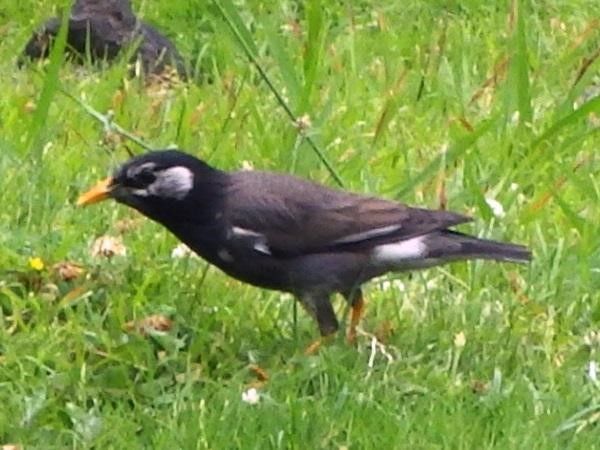 Corvidae カラス: Garrulus glandariusカケス, Pica pica カササギ, Nucifraga caryocatactes ホシガラス
Corvidae カラス: Garrulus glandariusカケス, Pica pica カササギ, Nucifraga caryocatactes ホシガラスCorvus カラス 3. Anseriformes 海鳥類/陸水鳥類, waterbirdAnseriformes (Wagler 1831) カモAnatidae カモ/ガンカモwild goose ガン(カリ) (goose ガチョウ/家雁: poultry), duck カモ/アヒル/家鴨: poultry) |
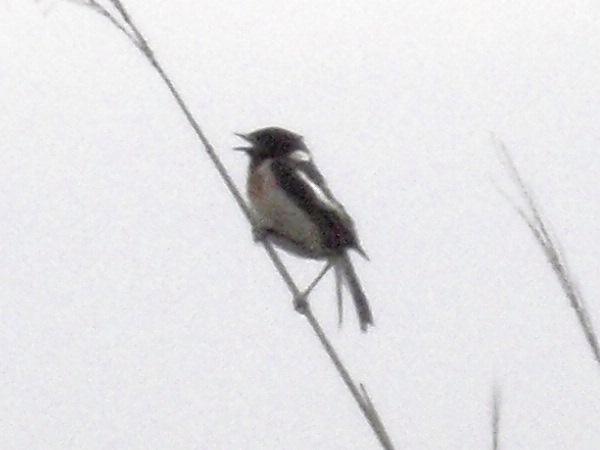 African Stonechat (Saxicola torquata) at Sunasaki Coast on July 22 2011. |
 Great Spotted Woodpecker (Dendrocopos major) near a Yachidamo (Fraxinus mandshurica) Park, East Ward, Sapporo, on May 5 2012. |
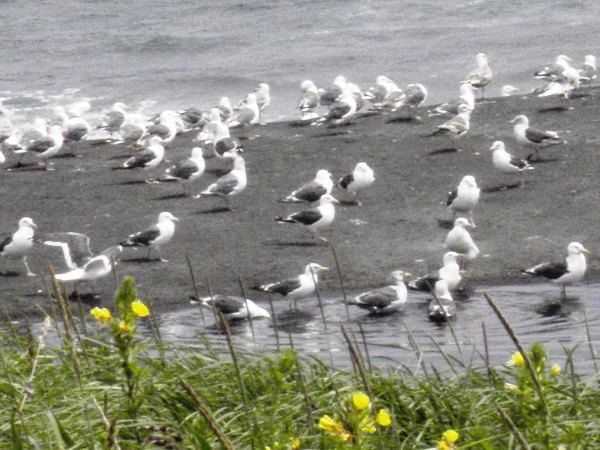 Slaty-backed Gull (Larus schistisagus) at the mouth of Myojin River on July 22 2011. |
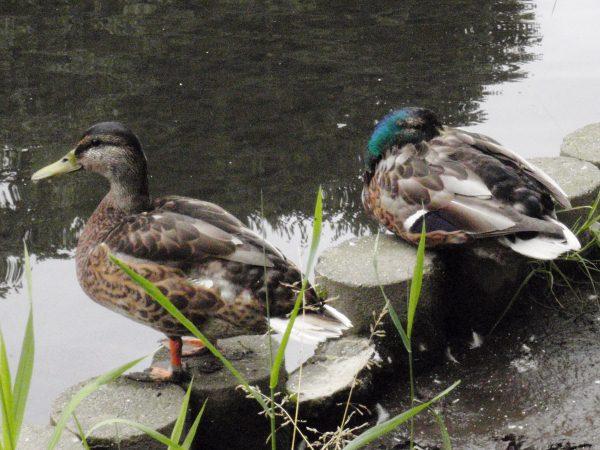 Mallard (Anas platyrhynchos) at Ono Pond close to the Faculty of Engineer, HU, on July 15 2011. |
 [10] Grey duck or Spotbill duck (Anas poecilorhyncha)in Hirose River, close to Aoba Castle, northern Honshu, on March 23 2016. We can often see them in the pond of Hokkaido Government Office. |
 Japanese Pied Wagtail or White Wagtail (Motacilla alba lugens Gloger 1829) near Shinkawa Bridge in Shinkawa River on May 1 2021. |
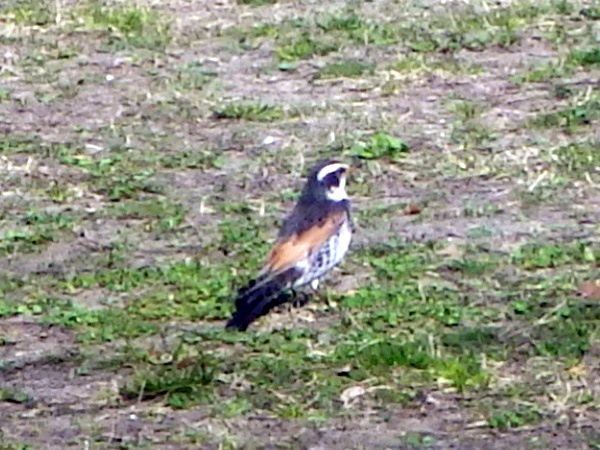 Dusky thrush (Turdus eunomus) at the Third Block North Park in the city of Sendai, northern Honshu, on March 23 2015. They are winter bird and move to Hokkaido soon. |
 Eurasian Magpie (Pica pica L. in the former sport ground of an elementary school in the city of Muroran on September 14 2015. The school was closed in the last year. The number of individuals has beeen increasing in the Iburi District of Hokkaido. Now it is popular in the residential areas of Tomakomai City. |
 Brown-eared bulbul (Hypsipetes amaurotis) near JR Tokyo Station, central Japan, on March 6 2012. |
 Rock dove or rock pigeon (Columba livia Gmelin 1789) near Subway North 24th Sation on December 23 2017. This species is originally in North Africa, Europe and Central Asia. |
 Little grebe (Tachybaptus ruficollis Pallas 1764) in the inner moat of Edo Castle, Tokyo, on October 19 2018. |
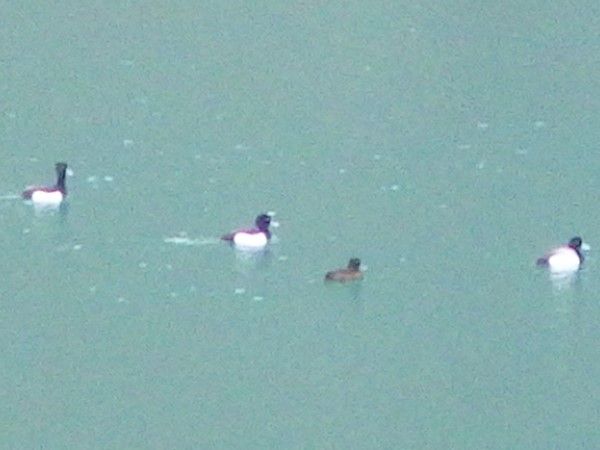 Ducks: Aythya fuligula♂, ♂ ♀ A. marila♂ from left to right. In a crater lake developed in the K-1 Crater of Mount Usu on April 10 2020. |
|
Crow: all-inclusive Raven: large Rook: small Jackdaw: pigeon-sized = smallest Crows distributed on Mount KomaCorvus macrorhynchos (Jungle Crow or Large-Billed Crow), Corvus corone (Carrion Crow)The former species is widespead more than the latter species on Mount Koma. H. Nishi took all pictures. Corvus macrorhynchos on Mount Koma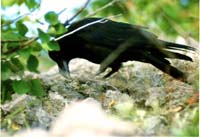 1 1
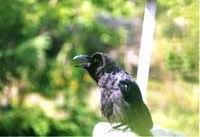 2 2
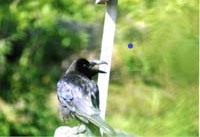 3 3
1. A Corvus macrorhynchos fed at 500 m in elevation. (July, 2002) 2. A Corvus macrorhynchos caws on a palign at 450 m in elevation. Near the car pool on Mount Koma, crows often use artificial poles as perch. (July, 2002) 3. Refer to photo 2. |
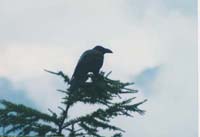 4 4
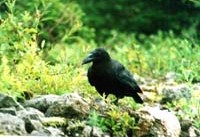 5 5
 6 6
4. A Corvus macrorhynchos stays on a larch. The dominant tree species on Mount Koma is now Japanese larch, and many bird species feed, reproduce and rest in areas where the larch is dominant. This photo was taken at 700 m in elevation. (July 2002) 5. A Corvus macrorhynchos walks on the ground to find out food. (Aug. 2002) 6. Refer to photo 5. 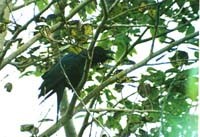 7 7
 8 8
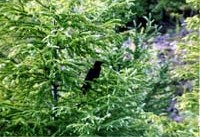 9 9
7. Corvus macrorhynchos caws on a Populus maximowiczii tree. As mentioned above, crows often utilize trees as perch. Therefore, the seedlings of Rhus trichocarpa often establish under the perches. 8. Corvus macrorhynchos on a larch at 500 m in elevation (August 2002) 9. Refer to photo 8. |
|
[ wind farm ] Effects of wind farm on wild birds
changes in migratory routes bird strike (birdstrike or bird hit) (バードストライク) |
Countermeasure probably effective:
locations and designs
colored turbines |